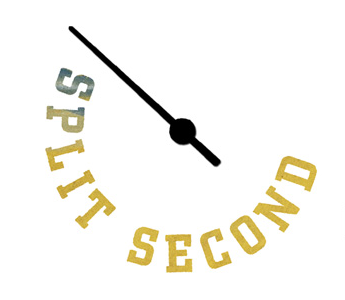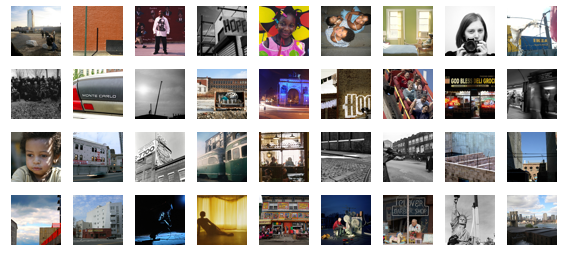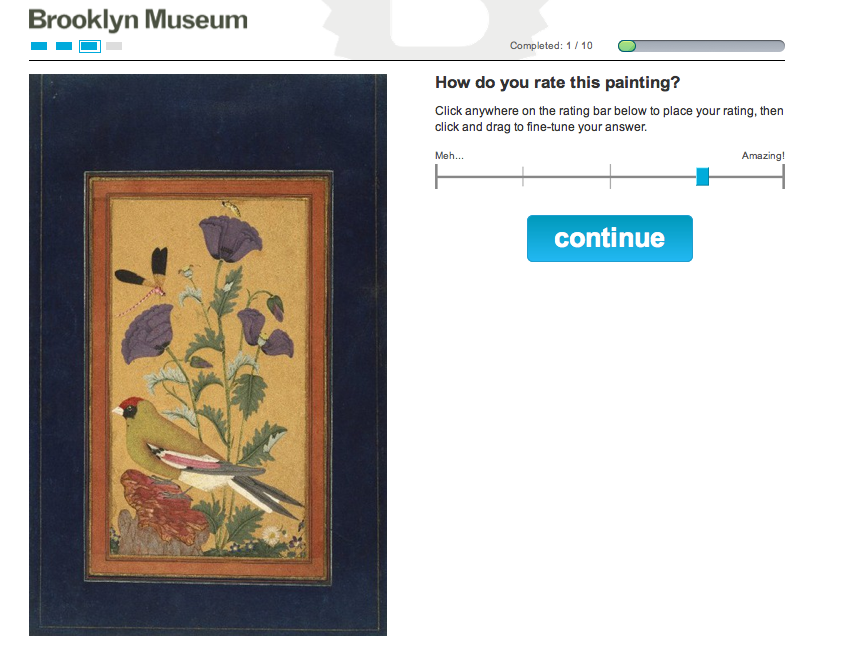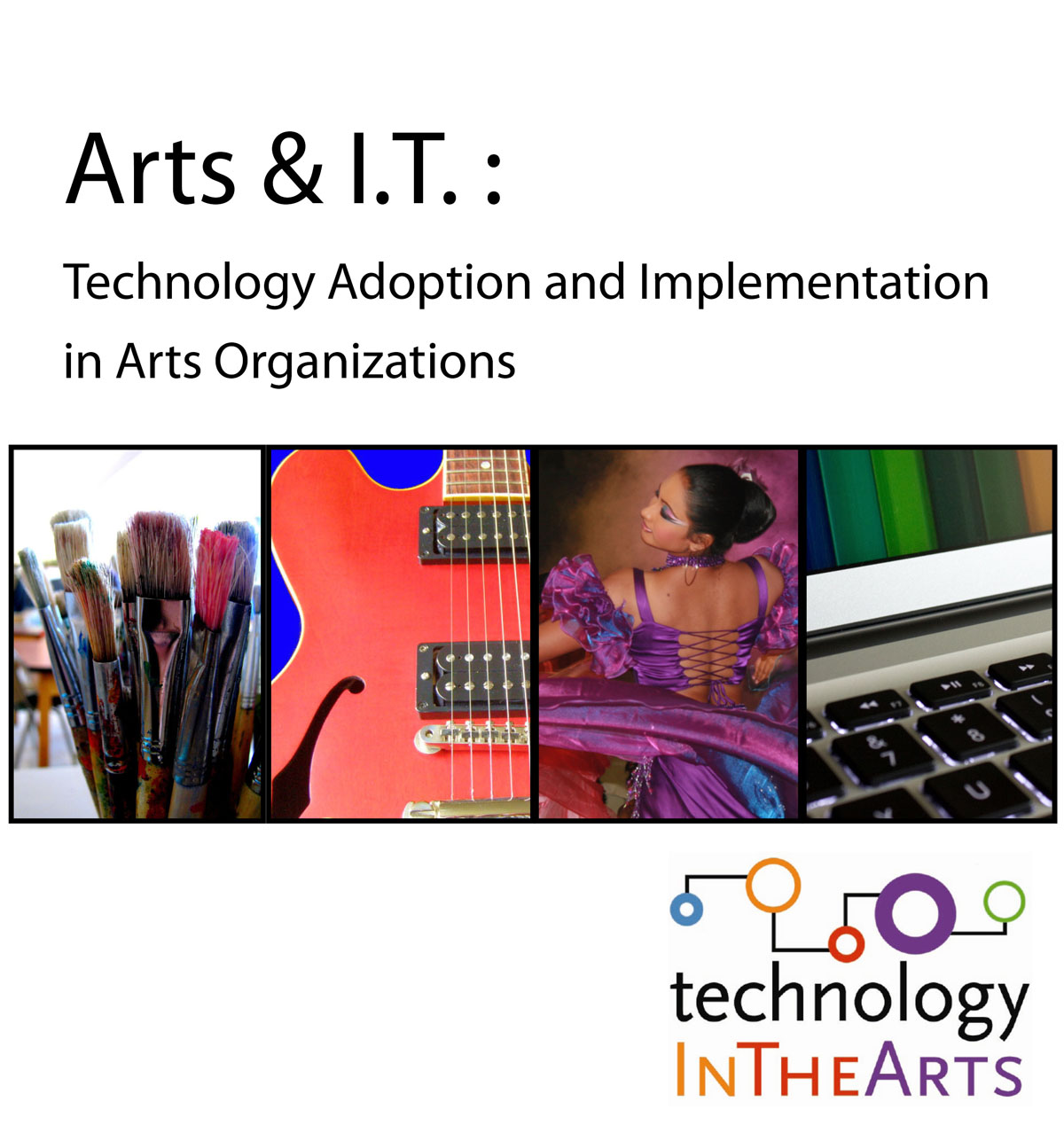In this post, I thought I’d try to “connect the dots” regarding some of the threads that seemed to come up frequently over the course of M&W2011.
New Questionnaire: Living Social, Groupon and the Arts
 The Living Social, Groupon and the Arts Questionnaire is now live!
Has your organization offered deals through group discount sites like Groupon and Living Social? Have you ever wondered about how other arts organizations are using online group discount services, and the successes and challenges they've faced along the way?
The Living Social, Groupon and the Arts Questionnaire is now live!
Has your organization offered deals through group discount sites like Groupon and Living Social? Have you ever wondered about how other arts organizations are using online group discount services, and the successes and challenges they've faced along the way?
We were wondering, too. So, we put together a short questionnaire to find out.
Please take a moment to fill out the Living Social, Groupon and the Arts Questionnaire and let us know about your own experience with either of these sites. It will only take a few minutes and your answers will remain anonymous, unless you specifically tell us otherwise. The questionnaire closes on April 15, so click through and fill it out before you forget!
And as always, we'll share the results with all of you here on the blog. Fill out the questionnaire today!
Twitter by Example: Our Favorite Tweeps
Why are some Twitter users so effective at getting your attention while others fall flat? What can you do to make your tweets stand out in a crowded feed? By taking the time to reflect on some of the engagement techniques you see cropping up amongst your fellow Tweeps, you can invent your own ways to harness the power of Twitter for your organization. The Technology in the Arts team thought it might be fun to highlight a handful of our favorite Twitter users from the arts sector. Check out these Twitter streams to see illustrations of successful, interesting, and unique ways to use the platform ...
My favorites:
@SFMOMA I love the tone of San Francisco MOMA’s tweets – they do a great job of blending humor with behind-the-scenes photos, museum happenings, and random things like wacky art historical facts. They actively participate in dialogue with not only other orgs but also their Twitter audience - and sometimes they even project their audience’s Tweets on their museum walls…now that’s some serious tweet integration.

@TheSoapFactory With a staff of only five people, this Minneapolis nonprofit gallery proves that small organizations can make a big impact via Twitter. Their tweets are conversational, friendly and often funny – and they actively tweet their support & enthusiasm for local arts happenings and the artists they work with. @TheSoapFactory loves shout outs, and always takes the time to publicly say “thank you” to volunteers and interns in their tweets. Their warmth and graciousness on Twitter creates a personal connection with their audience – which goes a long way in the tweetosphere, despite their relatively small size.

@yokoono With nearly 1.9 million followers, Yoko’s got a worldwide Twitter audience, and she keeps them engaged in a variety of innovative ways that other artists and arts organizations can learn from. Each week, she posts a series of responses to questions that are tweeted to her – showing that she really cares about engaging in dialogue with her fans. Her own tweets are powerful in their simplicity and she’s always got a positive message to share. She encourages followers to participate by creating their own positive messages, too: the Imagine Peace Tower, an art installation located in Iceland, lights up a few weeks each year with tweeted "wishes" related to peace and love. So far, over 1.3 million wishes have been sent via @IPTower, and it's happening now through March 26.

Amelia's favorite:
@SUEtheTrex at Chicago's Field Museum. "Hi. I'm Sue, I'm a Leo, I like meat, Chicago, the movie Jurassic Park, and what else? Oh yeah, I'm the world's greatest apex predator." This tagline says it all about Sue the T-Rex--she's sassy, hilarious, and about 2 million years old. That doesn't stop her from having conversations with present-day life forms, tweeting about current events--everything from Thanksgiving to Women's History Month--and educating about the T-Rex. A great example of employees personalizing an institution.

David's favorites:
@artfulmanager Andrew Taylor, author of the Artful Manager blog and Director of University of Wisconsin’s MBA in Arts Administration, always provides great resources for arts managers. His retweets tend to pull from sources that I may not be following – which opens me up to new content that I might not otherwise stumble upon.

@travisbedard Travis Bedard, Artistic Director of Austin’s Cambiare Productions theatre company, provides a great combination of humor and informative posts from the theatre community.

@Brandinyourhand International arts consultant Roger Tomlinson always offers thoughtful information and insights from across the Pond.

@JamesUrbaniak New York stage, screen and voice actor James Urbaniak is a subversive pleasure. Witty, sarcastic and irreverent – a wonderful 140-characters-or-less chucklefest.

Tom's favorites:
@MuseumNext is one of my favorite sources for finding out not just what is going on with museums now, but in the future as well. Through their blog, publications and their conference, MuseumNext highlights the ways museums are using technology to become more participatory and engaging for audiences. Plus, these are the folks that brought us the wildly popular twitter campaigns Ask a Curator, Follow a Museum and most recently Picture a Museum Day.

@MuseumNerd Oh, the Museum Nerd. That Brooklyn-based lover of all things art. Museum Nerd is an anonymous persona who tweets about his/her experiences as they weave through different exhibits. Besides the color commentary, Museum Nerd is great at engaging both visitors and museums on Twitter while exploring exhibits and other art world happenings.

@NancyProctor The Head of Mobile Strategy and Initiatives for the Smithsonian Institution, I feel like Nancy Proctor is the Queen of museum mobile tech on Twitter. I check her feed for the latest developments in museum mobile tech, thoughts on best practices and to find who is experimenting and how. You can usually find her dropping some mobile tech knowledge with the hashtags #mtogo and #simobile.

Tara's favorite:
@atane Atane O. is one of my favorite music and audiophile nerds to follow on Twitter. He's currently a blogger for the Elements of Jazz blog, and always has cool pictures, videos and music clips to share via his Twitter stream. He also has an amazing vinyl collection (and great turntables!).

Now, it's your turn: who do YOU love on Twitter, and why?
Museum crowd-curation and the way we live now
Should more museums follow the Brooklyn Museum’s lead?
Recently, I helped curate Split-Second: Indian Paintings, a show for the Brooklyn Museum. To do so, I simply visited their website and participated in an online activity. It took me about ten minutes, and it involved briefly looking at images, clicking on those paintings that I found most intriguing and rating other paintings on a sliding scale.
My participation in this process got me thinking not only about Indian art, but also about how my own perceptions of art in general might be shaped, and how my aesthetic tastes might compare to the sensibilities of the general public. Even more interesting to me was that this experiment in crowd-curation felt like the inevitable extension of the movement towards a more participatory culture.
What is it?
Museum crowd-curation enables the general public to become a part of the curatorial process by helping to determine, through an online platform, the artwork to be included in a physical exhibition displayed in a museum’s gallery.
The Brooklyn Museum pioneered crowd-curation three years ago with its photography exhibition Click! . First launched through an open call for artists to submit photos related to the theme of “The Changing Faces of Brooklyn”, the artwork was then made available online for anyone to curate. Perhaps most interestingly, the Brooklyn Museum staff took a transparent and scientific approach to the experiment, publicly sharing data and thoughtful analysis every step of the way. Check out Brad's Technology in the Arts podcast with Shelley Bernstein from 2008 to learn more about Click!
Now, Bernstein and the folks at the Brooklyn Museum are offering a new spin on crowd-curation by injecting theories of connoisseurship to Split-Second: Indian Paintings. Based on ideas from the book Blink by Malcolm Gladwell, Split-Second seeks to explore how our first impressions might affect our perceptions of art as well as the production of a museum exhibition. In the end, we’re left with an engaging viewer/curator experience that subtly mixes the professional with the amateur.
Why is crowd-curation so intriguing?
Increasingly, we are becoming a culture of curators, especially in the virtual world. We spend our time organizing media according to preference, grouping our memories into online photo and video databanks, and “liking” and commenting on things that other people share. What this means is that arts audiences are coming to the gallery with a newly emboldened sense of organizing and presenting content. Arts organizations therefore need to play an active role by creating opportunities for meaningful engagement.
Organizations that are at the forefront of online audience engagement are presenting ideas that go beyond simply offering information about programming. Instead, they are experimenting with different ways that audiences can become co-creators of content, which can then lead to a sense of ownership in the institution. But crowd-curation should not be simply a matter of presenting art works and having a voting contest in the sense of American Idol. Rather, arts managers need to envision a place of meaningful dialogue between their organization and their audience.
Crowd-curation is exciting because it is a clear illustration of the changing dynamics of the audience/museum relationship. It takes creative online participation and literally translates the collective online vision into physical space. Along the way, it can stimulate creative thinking by:
- Getting the participant/curator to think about her own internal perceptions of art, and perhaps inspire her to dig even deeper through self-reflection. What struck me most in my experience as a curator of Split-Second was how successful the exercise was in getting me to think about not only the art in the show but also my own understanding of visual culture.
- Creating discussion, based upon the collective decisions of the audience, about big-picture questions, like: How is artistic value determined? Is general consensus achievable in determining artist merit?
By putting the internal and collective processes together, crowd-curation has the potential to achieve multiple levels of meaningful contemplation. Of course, arts managers may feel like they are taking a significant risk. They may fear that the artistic content chosen by the masses will not constitute a “quality” exhibition in the traditional sense. And, perhaps worse, if crowd-curation IS able to produce a quality exhibition, then what is the point of having all of these professionals around? However, as sites like Wikipedia or perhaps the “comments” section of any website have shown, opening up the production of content to crowds is precisely the time when professional, articulate viewpoints are needed most.
This is not to argue that crowd-curation methods should or will replace traditional curatorial models. In fact, it doesn’t make sense for all art museums to try it (based on a number of factors such as the nature of the audience, resources available, the nature of the exhibit, etc.) Even so, crowd-curation is an innovative approach to breaking down the barriers between art museum and audience, and it’s a fascinating reflection of the way we live now.
Technology Adoption and Implementation in Arts Organizations
Technology in the Arts has just published the results of a survey regarding technology adoption and implementation in the arts and cultural field. (Access the PDF publication here).
In order to uncover emerging trends and differences in the use of technology amongst arts and cultural organizations, we asked arts managers to provide us with baseline information as well as a self-assessment of the role of technology in their organizations. Respondents shared information about where they are now, which technologies they hope to adopt in the coming year, and how they find the resources they need to implement and maintain technology.
This report, which includes responses across a broad spectrum of arts and cultural organizations representing a variety of disciplines in the United States and Canada, reveals a snapshot of how the field approaches technology.
What did we discover? Here is a small sampling of the findings that emerged:
- Over three-quarters of organizations with annual budgets of less than $500,000 spent under $5000 on technology in the past year, while half of organizations with budgets of $5 million or more spent over $100,000.
- Nearly half of organizations with budgets between $2.5 million and $5 million have no full-time technology staff, and that figure jumps to 82% for organizations with annual budgets of less than $500,000.
- Organizations with annual budgets of less than $500,000 currently use static websites at a higher rate than dynamic websites, while all larger organizations are more likely to have already moved away from static websites.
- A large percentage of respondents, regardless of organizational budget size, did not respond with any specific technology plans for the next year--which may indicate an overall lack of planning for future technology.
Want to find out more? Check out our report and see how your organization compares.
Older Adults and Social Media, Part II: Talking with the Experts
In my last post, I asked you to think about the ways in which your organization’s social media strategies might be affected by the growing number of users over age 50. While age diversity is just one of many factors to consider when thinking about your organization’s online audience, it can be used as a point of departure in order to examine broader ideas about how to foster audience engagement through social media. To learn more, I asked three experts to answer five questions about what the rise of older adults using social media might mean for arts organizations. Below, you'll find insight from Ron Evans, Principal of Groupofminds.com Arts Marketing Consultants, Brian Reich, Managing Director of little m media and editor of thinkingaboutmedia.com, and Maryann Devine, founder of smArts & Culture and a host of tomorrow's webinar, "How to Make the Most of Your Facebook Page".
When you first began advising arts organizations in their social media strategies, how strong was the tendency to appeal to specifically younger audiences? How did that translate into the content and tone of an organization’s social media identity?
 MARYANN DEVINE: At that time, the desire to reach a younger, new audience was usually the primary reason for branching out into social media. Most groups assumed that their older, traditional audience wasn't online, much less using social media, and that belief is still prevalent today. However, most groups didn't get that social media spaces demand a different voice -- more personal, more human -- than the marketing and advertising materials they were used to producing. They were reaching for a fun, hip tone; but in most cases, like your parents trying to be cool, they weren't very convincing.
MARYANN DEVINE: At that time, the desire to reach a younger, new audience was usually the primary reason for branching out into social media. Most groups assumed that their older, traditional audience wasn't online, much less using social media, and that belief is still prevalent today. However, most groups didn't get that social media spaces demand a different voice -- more personal, more human -- than the marketing and advertising materials they were used to producing. They were reaching for a fun, hip tone; but in most cases, like your parents trying to be cool, they weren't very convincing.

RON EVANS: Reaching younger audiences has always been the initial main focus for the arts organizations I've come in contact with. I can't say that organizations were specifically writing content in a style to reach a younger audience (although that would be interesting). For the most part, the content I see today is not age-specific at all. And oftentimes the tone is still very institutional, where it should be conversational. David Dombrosky just had a great quote over at the arts marketing blog salon that I agree with: “When social media sites are used with a motivation for engagement rather than self-promotion, they often lead to those desired marketing outcomes of increased sales and brand awareness.”
 BRIAN REICH: The age of the audience has never mattered as much to me, and the people I advise. Everyone's lives are influenced by technology -- and now the Internet. Adoption was consistent across different age groups, but the usage patterns were very different, and that was where my focus has always been trained. Rather than look at younger audiences and their willingness to do certain things online, I wanted to identify what opportunities were available in terms of engaging any audience and then advise organizations on what that means to their work, online and offline.
BRIAN REICH: The age of the audience has never mattered as much to me, and the people I advise. Everyone's lives are influenced by technology -- and now the Internet. Adoption was consistent across different age groups, but the usage patterns were very different, and that was where my focus has always been trained. Rather than look at younger audiences and their willingness to do certain things online, I wanted to identify what opportunities were available in terms of engaging any audience and then advise organizations on what that means to their work, online and offline.
Do you find that organizations are beginning to understand the implications of strong social media engagement across demographics, or does it continue to be largely seen as a way to reach younger audiences?
B.R.: Yes and no. I think there is significantly more willingness to experiment and explore what is possible online, and through social media, but most organizations still lack a deep commitment to what is required to fully engage and fully leverage what is possible. Using the tools is not enough -- its how you use them that's important. Most organizations still don't share enough. More organizations still don't listen enough, or well enough. Most organizations don't engage enough. We have seen organizations integrate social media into their marketing and communications mix without changing the way they operate, organize, their staffing, etc. I would argue that we need to shift and reset the way we do everything to make the kind of advances that are possible.
R.E.: Only now am I seeing that they are realizing that there are other segments who are using Facebook. The often-quoted statistic is that the fastest-growing segment on Facebook is women over 60. That's probably true -- Facebook is where all the photos from the grandkids and such are located now. But that may be all the people are doing -- they may not be playing Facebook games, writing on the walls of arts organizations, or even updating their own status. The statistics are still being gathered about their true activity, but since that age range has traditionally been great at supporting the arts, it makes sense for arts organizations to start talking to them too.
M.D.: My experience has been that most arts organizations, whose traditional audience skews older, still assume that they're not using social media. We haven't been effective in communicating to them research findings to the contrary. The Pew Internet & American Life project found that social media use by U.S. seniors doubled last year, and 13% of people 65 and older log onto a social networking site on a typical day.
Do you find that different age groups have different needs and wants from social media?
R.E.: If you take email as the main form of communication as the base, you can look outside of that to see what people are doing. Email is still the primary way of communicating for business purposes. Some folks are just using it for that (sending an occasional email) and are mainly using Facebook for all peer-to-peer communications. Some people use Twitter for that as well, but of course, your messages tend to be much shorter.
M.D.: I think the one desire that unites people of all ages using social media is connection. Younger people are more likely to be creating and publishing original content online, and that likelihood goes down with age. Across the board, the people Forrester Research calls joiners -- those who join social networks, for example -- and spectators -- people who read blogs but don't comment, for instance -- are most prevalent.
B.R.: I think different people have different wants and needs from media generally, online and more traditional forms -- but it goes beyond age. When looking at different audience groups there are four things that help to determine, from my perspective, what people want and need. Demographics (which includes age), psychographics (what people read, watch on TV, the car they drive, etc.), technographics (their comfort with different types of technology or expectations when using a particular platform or channel) and behavioral info -- specifically what they have done in a certain context before. Yes, age does impact how people get/share information and what they expect, but there are other factors that help to create a more complete and more interesting profile of an audience that we can use to consider how an organization might communicate.
Have you found that certain social media techniques are more effective for users of different ages?
M.D.: Sure. As I said, different age groups use social media in different ways, so, for instance, it might be effective to connect to your boomer audience through Facebook or get them to join a private social network because they're likely to be joiners. But getting them to post comments, photos, or come up with a creative entry to a contest might be a stretch because on the whole, they're not big on creating and publishing original content.
R.E.: Currently, I know of no arts organization that segments to different age groups, because Facebook and Twitter do not make it easy to do this. You could set up multiple accounts of course, but that's pretty cumbersome to manage. I think this capability will be coming though...
B.R.: I don't think it’s about the technique, but rather how the target audience gets/shares information, what their expectations are in a particular situation, etc. The same techniques will work, or not work, on the same audience depending on what the conversation is about, or the time of day or location of the interaction. Its common for organizations to look to the tactics, or the tools, as the solution to a communications challenge - but that is a mistake. The tools and tactics are what facilitates the engagement - and they are flexible enough to adapt to any situation. What organizations need to really understand are their goals (and how to measure their desired outcomes/impact) and the strategy for meeting those goals -- how they need to approach the challenge. What we do know is that every audience, in every situation, is fundamentally looking for the same thing: little m media... which I define as timely, relevant, compelling INFORMATION, meaningful EXPERIENCES that they want to share, talk to people about and similar, and/or STUFF that people value and want to have as a part of their lives. If you can provide good information, experiences and stuff, the mediums and tactics can always vary and you'll still find success.
Are there any tools or methods that can help us target our various demographic bases effectively? Any tips on how we can tailor our communication to specific audience segments while still maintaining brand consistency?
B.R.: Again, you have to look beyond just demographics and really start to appreciate the psychographic, technographic and behavioral information. There are lots of studies available, lots of free data that you can look at... and if you take different pieces and parts and mash it up you will find a pretty compelling profile of your audience form which will help you to make some choices about your communications efforts. Pay attention to how people act. Consider what people want. Ask questions. Build deeper profiles of your targets, and members and supporters, and everyone else, by collecting information and determining WHY someone took a certain action or favored a particular opportunity. If you can do that the rest will turn out to be much easier.
R.E.: Perhaps I can answer this best by telling you what's missing from Facebook. Facebook needs to offer a way to segment messages based on whatever grouping of people you want. As a patron, I should be able to be a part of different "clubs" that are connected to an organization's Facebook page, so I can segment myself into a club of my choosing. That club would have it's own status updates and leaders who would help the communication to happen around a shared sub-interest, such as "Opening Night Singles Club" or the "Matinee and Coffee" club. Right now, the one-size fits all of Facebook pages doesn't allow a whole lot of flexibility. I think this will get here eventually, and I think the capabilities to manage a social media presence inside an organization will also grow to be able to accommodate this new capability.
M.D.: Forrester Research makes a number of tools free and available on their site, including the Social Technographics Profile tool. I think that, in tailoring your communications to specific audience segments, you should picture yourself personally talking to real people in each of those segments in different situations. For instance, you'd use a different tone in talking to your grandmother than you would in talking to your daughter's college roommate, but you'd still sound like yourself. It's the same with the voice you use as an organization -- you can adjust for the context of the conversation while still sounding authentically like you.








